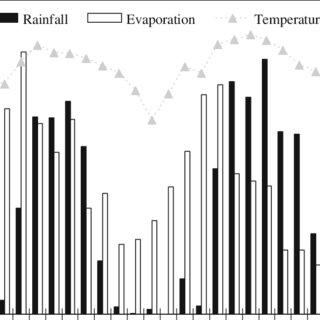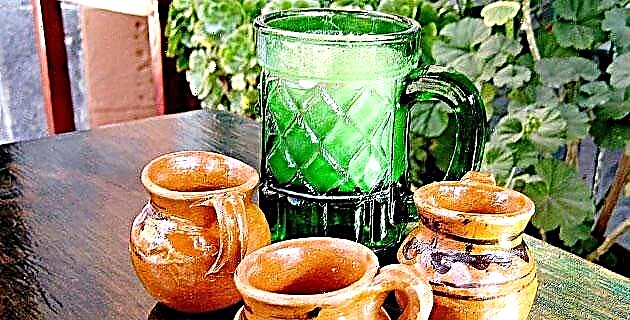
They say that pulque from Apan, back in the 1920s, was already a tradition. The train arrived in Mexico City every morning with fresh pulque that was served at the best tables in Porfirian society, just like in the countryside, when the women carried the "itacate", always accompanied by a small jug of this euphoric drink. .
Trying to find the origins of this national drink, I go to the very heart of its traditional elaboration: Apan. To my surprise, what remains of the great estates of the region has been plunged into silence and inactivity for many years. The large maguey plantations have disappeared and these noble plants are only used to delimit the barley fields that have replaced them. Pulque is now only produced in small quantities for local consumption!
Asking around here and there, I run into Valentín Rosas, a former tlachiquero, friendly and joker who decides to accompany me and be my guide. Discouraged by my discoveries in Apan, I head to the town of Santa Rosa, where Gabriela Vázquez recommends that we look for Don Pazcasio Gutiérrez: "That man does know!" –He clarifies us.
When we arrive at Mr. Gutiérrez's house, they lead us to the water tank and from its dark background emerges the kind figure of a strong man in his seventies. I comment on my intention to know "live" everything related to pulque. Without further ado, he agrees to help us and says goodbye with a “See you tomorrow! After the sun rises, we go to the mountains! " His words tell me that this going to scratch is not a matter of rush.
The next day, around 8 in the morning, we left for the mountains at a very calm pace. "If there is no rush, pulque awaits me there!" –He told me when I wanted to rush the “Avocado”, his nice donkey.
“When I was a child,” said Don Pazcasio, “Apan was something else. The magueys covered the whole land. Most of them worked on the large estates. Twice a day the tlachiqueros scraped and extracted the mead with the acocotes (gourds) and took the filled chestnuts to the tinacales that could hold up to 1,000 liters.
“An important part of the process - continues Don Pazcasio - is to add the seed (xnaxtli) or ripe pulque with which the fermentation begins. In itself, the process of making pulque is very simple but is loaded with superstition. The tinacal was considered a semi-sacred place, and at the beginning prayers were said. You couldn't wear a hat, strangers or women were not allowed, and you shouldn't say bad words, because all this could spoil pulque ”.
Finally we found a maguey from which they took mead for us to taste. I found it delicious! Don Pazcasio clarified to me that pulque is obtained from the fermentation of mead, while mezcal and tequila are obtained from the distillation of the same mead.
"From seven to 10 years old, the maguey reaches its maturity, and from the center, like an enormous artichoke that begins to swell, a large stem of a single flower begins to grow," Don Pazcasio continues to document us. Before it blooms, the plant is castrated by cutting off the stem that reveals the ‘pineapple’ from which an opening of about thirty or fifty centimeters is made to extract the mead. Each plant can produce between five and six liters per day. The juice must be collected twice a day to avoid fermentation, and to protect the plant from insects and soil, some leaves are folded over the opening, interweaving them with thorns. After four or six months the plant, which has already produced many liters of mead, loses its essence and dries up.
“Pulque is milky, slightly frothy and sour and has more alcohol than beer, but less than wine. As it is rich in vitamins, minerals and amino acids, they say it is only one degree short of chicken broth! Crushed fruit is added to the 'cured' pulque, which greatly improves its flavor and makes it even more nutritious. "
There are several historical testimonies of the consumption of this drink, among them some Mayan hieroglyphs and a mural in the Great Pyramid of Cholula, in Puebla, in which a group of happy pulque drinkers is observed. The truth is that almost all the cultures of Mexico used it and some did so for almost two thousand years. Some believed that the goddess Mayahuel entered the heart of the maguey and letting her blood flow together with the sap of the plant created pulque. Others claim that Papantzin, a Toltec nobleman, discovered how to extract the mead and sent his daughter Xóchitl with an offering of this sweet sap for King Tecpancaltzin, who was so enchanted by the effluvia of the drink, that he married her. Others say that the one who discovered pulque and turned out to be the first drunk was an opossum!
Pulque was drunk by nobles and priests to celebrate great victories or on special religious holidays. Its consumption was restricted only to the elderly, lactating women, rulers and priests, while for the people only in certain celebrations.
After the conquest there were no longer laws that controlled the use of pulque, and it was until 1672 that the government of the viceroyalty began to regulate it.
Starting in the 1920s, the government tried to eradicate pulque. During the presidency of Lázaro Cárdenas there were anti-alcoholic campaigns that tried to suppress him completely.
"Today this is no longer a joke," concludes Don Pazcasio. Chestnuts and acocotes are now made of fiberglass, and there are some who are wanting to send canned pulque! To united states. They say they call it ‘Apan nectar’, but the truth is that it tastes like everything, except pulque! Sometimes tourists want to try it, but it is very difficult for them to find a good quality one. The pulque industry is dying out! I wish the government would do something so that pulque, a drink of such quality, would regain its popularity and have the boom that tequila has today worldwide. The maguey is like the root of our land and the pulque its blood, a blood that should continue to feed us. "











